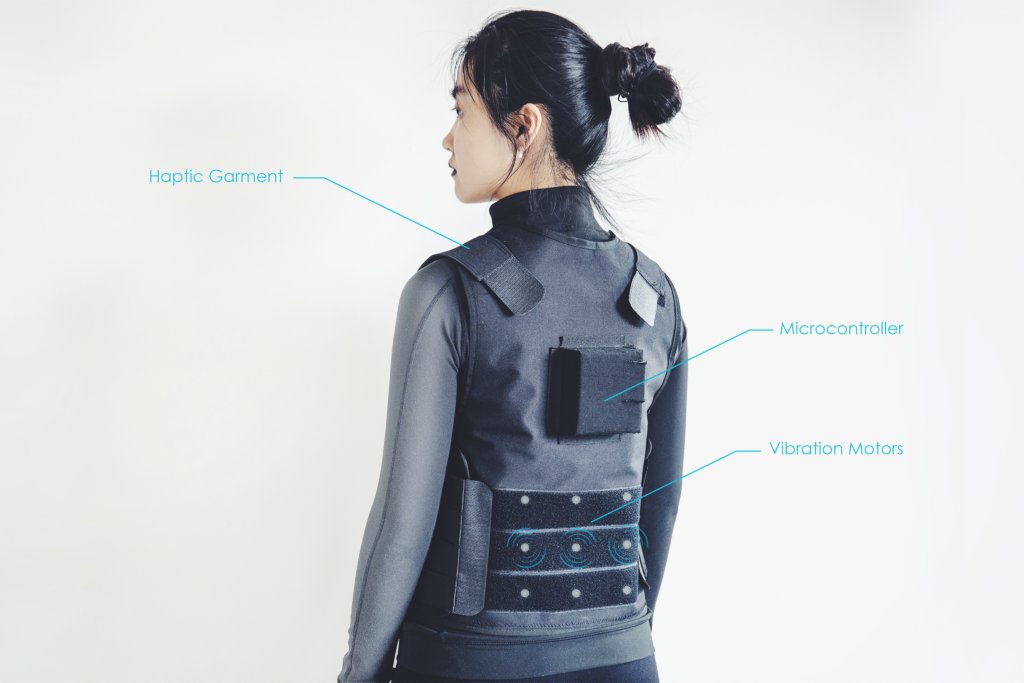The goal of the project is to implement on-body vibrotactile feedback in interaction design. Thus, the project proposed Haptic Symbol, dynamic vibrotactile patterns linking to specific information cues, that are projected on the lower back. The concept shares the philosophy of semantics in linguistics, as well as the visual icons in traditional computer interface, where artificially attach meanings with association and metaphors to the signifiers. Thus, a co-design approach was proposed with a simple design tool, for the effective creation of dynamic vibrotactile patterns from a starting point of experience and feeling. In this way, the interaction design is emphasised, giving more autonomy to designers. The designed haptic symbols were implemented in a functional and experiential wearable prototype. The usability test shows that the designed patterns are recognizable and understandable, and the wearable interface to project haptic feedback on the lower back area is feasible.
The goal of the project is to implement on-body vibrotactile feedback in interaction design. Thus, the project proposed Haptic Symbol, dynamic vibrotactile patterns linking to specific information cues, that are projected on the lower back. The concept shares the philosophy of semantics in linguistics, as well as the visual icons in traditional computer interface,
where artificially attach meanings with association and metaphors to the signifiers. Thus, a co-design approach was proposed with a simple design tool, for the effective creation of dynamic vibrotactile patterns from a starting point of experience and feeling. In this way, the interaction design is emphasised, giving more autonomy to designers.
The designed haptic symbols were implemented in a functional and experiential wearable prototype. The usability test shows that the designed patterns are recognizable and understandable, and the wearable interface to project haptic feedback on the lower back area is feasible.
As digital products are gradually accepted in our lives, new heterogenous ecologies of human, connected devices, and machine actors develop and overlap existing applications and work settings. This has generated intricate multimodal interactions within the ecology, and we need new ways to signal and communicate with intelligent machines.
New modalities like Haptic Symbols can provide a new way of conveying, independently or complementarily to the visual and auditory modality, and ease the transition to shared ecologies. The design demonstrates how to project aspects of machine communication onto the human body, by proposing a co-design session and a simple design tool. The Haptic Symbols in this project cover general purpose information, which can be extended and contextualized in domain-specific ways for a given ecology through the proposed design approach.


